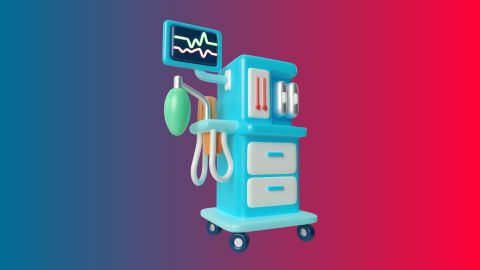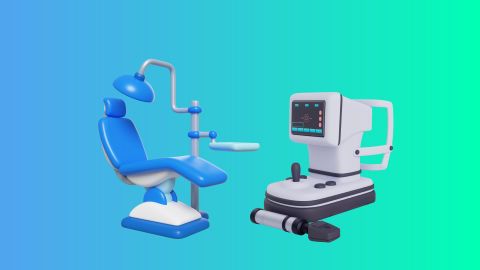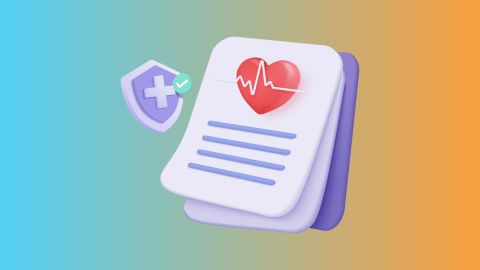Oxygen cylinders are an essential part of medical equipment, used to provide supplemental oxygen to patients who are unable to get enough oxygen through normal breathing. They are commonly found in hospitals, clinics, and even in home care settings for individuals with respiratory conditions like COPD, asthma, or during recovery from surgery.
Understanding the various types of oxygen cylinders, their features, and how to use them properly is important for ensuring the right oxygen therapy. The price of an oxygen cylinder can vary depending on the type, size, and brand, so it’s important to make an informed decision.
In this article, we’ll guide you through everything you need to know about oxygen cylinders, their benefits, pricing, and how Bajaj Finserv Medical Equipment Finance can help you finance your medical equipment needs.
What is an oxygen cylinder?
An oxygen cylinder is a pressurised container that stores oxygen gas for medical or industrial use. In the medical field, it is used to supply supplemental oxygen to patients who require additional oxygen due to various health conditions such as respiratory distress, asthma, COPD, or after surgeries. Oxygen cylinders come in different sizes and can either be portable or stationary.
The cylinder itself is made from durable materials, typically steel or aluminium, to withstand high pressure. The oxygen inside the cylinder is stored in liquid form and can be converted back to gas for use when needed. These cylinders are equipped with valves and regulators to control the flow of oxygen to the patient.
Types of oxygen cylinders
There are several types of oxygen cylinders available, each designed for specific uses. Here are the main types:
- Type A: These are the most common oxygen cylinders used in medical facilities. They are larger in size and provide a higher volume of oxygen. Ideal for hospitals and clinics where oxygen supply needs to be consistent over longer periods.
- Type B: These are smaller cylinders designed for home care or transport. They are portable and easier to carry, offering a limited oxygen supply but useful for short-term use.
- Type D: Known for being compact and portable, Type D cylinders are often used in ambulances and for personal home use. They provide a medium amount of oxygen.
- Type E: Type E cylinders are the most portable, often used for short-term oxygen therapy, particularly during travel or for small medical settings.
Before investing in a variety of oxygen cylinder types for different medical settings, check your pre-approved medical equipment finance offer to understand available funding options tailored to healthcare providers.
Each type of oxygen cylinder is designed to meet specific needs, from large, stationary medical facilities to portable solutions for home use or emergency situations.
Features of oxygen cylinders
When considering oxygen cylinders, it's essential to evaluate their features to ensure they meet your requirements. Here are some key features:
- Material: Most oxygen cylinders are made of high-strength materials such as steel or aluminium, ensuring durability and safety under pressure.
- Size and weight: Depending on the intended use, oxygen cylinders come in various sizes. Larger cylinders provide a higher oxygen capacity but are less portable, while smaller cylinders are more lightweight and portable.
- Valve and regulator: Oxygen cylinders are equipped with valves that control the release of oxygen. Regulators are used to adjust the flow rate of oxygen based on the patient’s needs.
- Pressure gauge: A pressure gauge is an essential feature that helps monitor the remaining oxygen level in the cylinder.
- Carrying handles: Many oxygen cylinders are designed with handles or straps to make them easier to carry, especially the smaller, portable types.
Benefits of oxygen cylinders
Oxygen cylinders provide several benefits, especially for people with respiratory issues. Some of the key benefits include:
- Improved oxygen supply: Oxygen cylinders help patients who have difficulty breathing by providing them with the necessary oxygen to maintain normal bodily functions.
- Portability: With smaller, portable options, oxygen cylinders can be carried around easily, allowing patients to continue their daily activities.
- Variety of sizes: Depending on the severity of the condition, oxygen cylinders come in different sizes to meet specific needs, from home use to hospital settings.
- Cost-effective: Compared to other oxygen delivery methods like oxygen concentrators, cylinders can be more cost-effective for short-term use.
Check your pre-approved doctor loan offer if you’re planning to upgrade your clinic’s respiratory care infrastructure with multiple oxygen cylinders or advanced delivery systems.
How to use an oxygen cylinder
Using an oxygen cylinder requires careful attention to safety and proper handling. Here are some pointers on how to use an oxygen cylinder:
- Check the cylinder: Always ensure the cylinder is in good condition and that it is filled with enough oxygen. Check for any damage or leakage before use.
- Install the regulator: Attach the regulator to the oxygen cylinder securely. Make sure the regulator is properly calibrated for the required oxygen flow rate.
- Adjust the flow: The oxygen flow rate should be adjusted according to the patient’s requirements. This is typically prescribed by a doctor or medical professional.
- Use the delivery system: Oxygen can be delivered to the patient through nasal cannulas, masks, or other delivery systems. Attach the appropriate system based on the patient's needs.
- Monitor the cylinder: Keep an eye on the pressure gauge and replace the cylinder when the oxygen supply is low to ensure there is no interruption in therapy.
Price of oxygen cylinders in India
The price of an oxygen cylinder in India depends on several factors, including the type of cylinder, size, and brand. Below is an approximate price range:
| Type of oxygen cylinder | Description | Estimated price range (Rs.) |
| Type A | Small capacity, lightweight cylinders for short-term or home use | Rs. 3,000 – Rs. 10,000 |
| Type B | Medium-sized, commonly used in clinics and small healthcare setups | Rs. 5,000 – Rs. 15,000 |
| Type D | Large capacity, suitable for hospitals and continuous use | Rs. 15,000 – Rs. 50,000 |
| Type E | Compact, portable option often used in ambulances or emergency kits | Rs. 8,000 – Rs. 25,000 |
| Bulk or centralised systems | Industrial-scale supply integrated into hospital pipelines | Rs. 1,00,000 – Rs. 30,00,00,000 |
Prices are indicative and may vary based on location and supplier.
Key factors affecting the price of oxygen cylinders
Several factors influence the price of an oxygen cylinder:
- Type and size: Larger cylinders or those with a higher capacity tend to be more expensive.
- Brand: Well-known brands with a reputation for quality and reliability may charge higher prices.
- Material: Cylinders made from high-strength materials such as aluminium may be costlier than those made from steel.
- Regulatory features: Cylinders with additional features such as advanced regulators or pressure gauges may be priced higher.
How to choose the right oxygen cylinder?
Choosing the right oxygen cylinder depends on various factors, including:
- Patient’s oxygen needs: Determine how much oxygen the patient requires. For long-term use, a larger cylinder may be needed, whereas for short-term or emergency use, a smaller, portable cylinder may suffice.
- Portability: If the patient needs to move around frequently, a portable, smaller oxygen cylinder would be more practical.
- Duration of use: Consider how long the oxygen will be used. Larger cylinders last longer and are more cost-effective for extended use.
- Budget: Oxygen cylinders come in various price ranges. Choose one that meets your needs while staying within your budget.
Check your doctor loan eligibility if you need broader financial assistance to expand your medical practice or manage operational costs, including critical care equipment.
Difference between an oxygen concentrator and an oxygen cylinder
While both an oxygen concentrator and an oxygen cylinder provide supplemental oxygen, there are some key differences:
| Feature | Oxygen cylinder | Oxygen concentrator |
| Supply method | Stored oxygen in gas form | Filters and concentrates oxygen from the air |
| Portability | Portable, but bulky | Portable and compact |
| Cost | More affordable initially | Higher upfront cost, but lower maintenance |
| Lifespan | Limited, need to replace gas | Long-lasting, requires minimal maintenance |
| Suitable for | Short-term use | Long-term use |
Conclusion
Oxygen cylinders are essential for patients with respiratory conditions, providing vital support for breathing. Choosing the right cylinder, understanding the types and features, and knowing the pricing is crucial for effective treatment. For those seeking affordable options, Bajaj Finserv Medical Equipment Finance offers flexible financing solutions and hospital loans, making it easier to purchase essential medical equipment.




